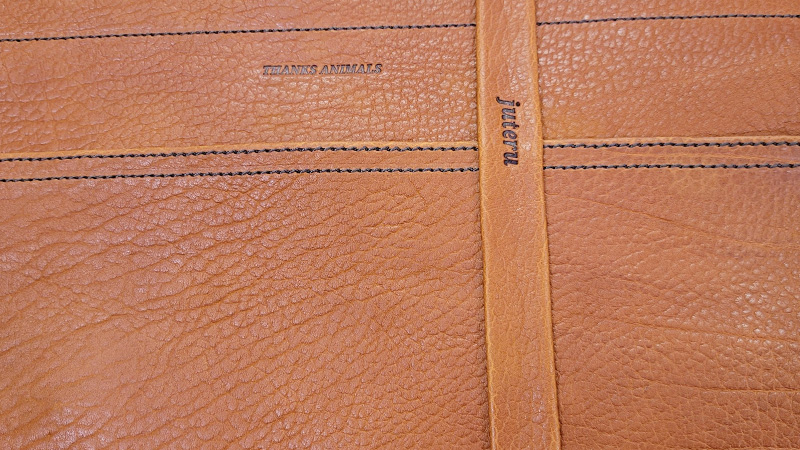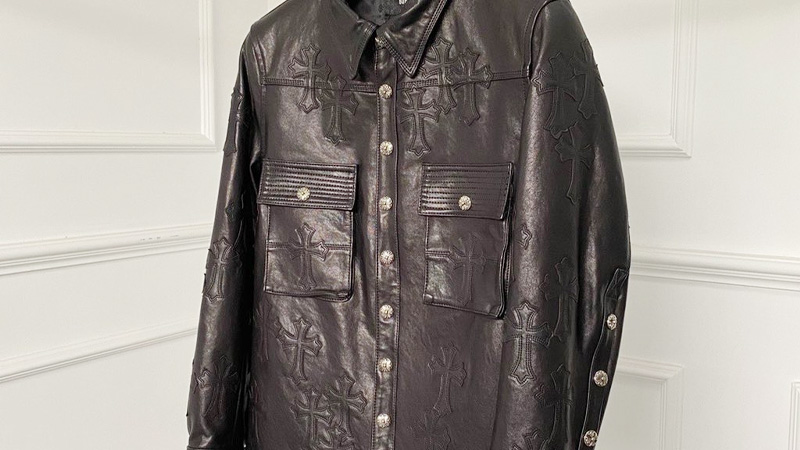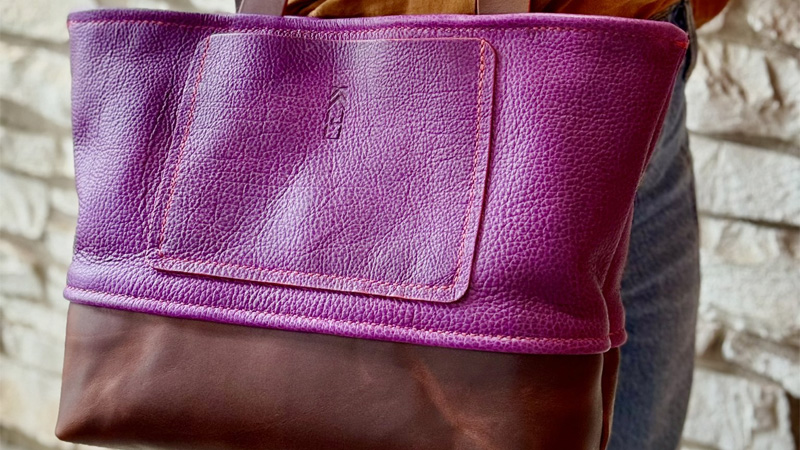Leather, an age-old symbol of craftsmanship and luxury, has captivated humanity with its enduring allure. Yet, this remarkable material, while robust and timeless, holds a hidden vulnerability when it encounters water.
The enigmatic question lingers: Does leather shrink when wet? To unlock this mystery, we embark on a journey into the intricate composition of leather and the intricate dance it performs with moisture.
Within its collagen-rich fibers lies a delicate equilibrium, one that is disrupted when water enters the equation.
As we explore the science behind leather’s interaction with moisture, we’ll uncover the mechanisms at play and discover how to protect this cherished material from the transformative effects of a wet encounter.

Does Leather Shrink When Wet?
Yes, leather can shrink when it becomes wet. When leather gets wet, it absorbs water, which causes the collagen fibers within the leather to swell.
As the leather dries, the moisture trapped within these fibers begins to evaporate, and as it does, the collagen fibers contract and tighten.
This natural process of drying causes the leather to shrink in size. The extent of the shrinkage can vary depending on factors such as the type of leather, the amount of water exposure, and the drying conditions.
It’s important to allow wet leather to air dry at room temperature to prevent excessive shrinkage or distortion and to take proper care of leather items to maintain their quality and shape.
Why Does Leather Shrink When Wet?

Leather shrinks when it gets wet due to the unique composition of the material and the way water interacts with it.
Here’s why leather tends to shrink when exposed to moisture:
Collagen Fiber Structure
Leather is primarily made up of collagen fibers. These fibers give leather its strength and durability. When leather comes into contact with water, these fibers absorb moisture and begin to swell.
Increased Moisture Content
As leather absorbs water, it becomes more pliable and flexible. This increased moisture content makes the leather feel soft and supple, which can be advantageous when using leather items in wet conditions.
Drying Process
The critical factor in leather shrinkage is the drying process. As wet leather dries, the moisture trapped within the collagen fibers starts to evaporate.
As this moisture evaporates, the collagen fibers contract and tighten, effectively pulling the leather material together. This natural process leads to the leather shrinking in size.
Heat Acceleration
Heat can amplify the shrinkage effect. When wet leather is exposed to direct heat sources like the sun, heaters, or hairdryers, the moisture within the fibers evaporates more rapidly.
Consequently, the collagen fibers contract at a faster rate, causing the leather to shrink more noticeably.
Loss of Natural Oils
As leather dries, it not only loses moisture but also its natural oils. These oils are essential for maintaining the leather’s flexibility and preventing it from becoming dry, stiff, and prone to shrinkage.
How to Safeguard Your Leather From Shrinkage When Wet?

Leather is a luxurious and durable material, but it can be vulnerable to damage and shrinkage when exposed to moisture.
To protect your leather items and prevent shrinkage when they get wet, follow these steps:
Start With Quality Leather
The foundation of preventing leather shrinkage begins with your initial choice. Invest in high-quality leather items, such as full-grain or top-grain leather, as they are naturally more resistant to shrinkage and other forms of damage.
Be Proactive – Keep Leather Dry
Prevention is your first line of defense. Whenever possible, shield your leather from moisture, especially rain and spills. Carrying an umbrella or raincoat can be a simple yet effective way to keep your leather dry in unpredictable weather conditions.
Apply a Leather Protector
Equip yourself with a reliable leather protector or water repellent. Different leather types may require specific protectors, so choose one that suits your leather’s type and finish.
These protectors create an invisible shield that repels moisture and prevents it from seeping into the leather.
Handle Wet Leather With Care
If your leather items do get wet, follow these steps to minimize shrinkage:
- Gently blot the wet areas with a clean, dry cloth or paper towel. Refrain from rubbing or wringing the leather, as this can damage the delicate fibers.
- Allow the wet leather to air dry naturally at room temperature in a well-ventilated area. Avoid direct exposure to heat sources like radiators, heaters, or sunlight, as this can lead to shrinkage, cracking, or fading.
- For leather shoes or bags, consider stuffing them with newspaper or a shoe tree to help them maintain their shape while drying.
Regularly Condition Your Leather
Leather, like your skin, benefits from hydration. Use a suitable leather conditioner designed for your specific type of leather to:
- Replenish essential oils and moisture.
- Maintain the leather’s suppleness and resilience.
- Always follow the conditioner’s instructions to ensure optimal results.
Proper Storage Matters
When not in use, store your leather items in a cool, dry place, away from direct sunlight and moisture. Utilizing dust bags or breathable fabric covers can protect your leather goods from dust and humidity, reducing the risk of shrinkage.
Mind Extreme Conditions
Protect your leather from extreme temperatures, whether hot or cold. Prolonged exposure to such conditions can lead to shrinkage, cracking, or brittleness.
Avoid leaving leather items in a hot car or subjecting them to freezing temperatures.
Rotate Your Leather Items
If you own multiple leather accessories, such as shoes, belts, or bags, rotate their use to distribute wear evenly and prevent overuse of any single item.
Seek Professional Help
In cases involving valuable or antique leather items or significant shrinkage, consult a professional leather expert or cobbler. They can provide expert advice on care and may offer restoration services.
Can Leather Regain Its Original Shape After It Has Shrunk When Wet?
Restoring leather to its original shape after it has shrunk due to exposure to moisture can be challenging. The extent of recovery depends on factors like the severity of shrinkage and leather quality.
Minor shrinkage may be partially reversible with proper conditioning and stretching techniques. However, for significant shrinkage, especially in lower-quality leather, complete restoration might not be possible.
Consulting a professional leather expert is advisable for such cases. Prevention and careful leather care remain essential in preserving its original shape and quality.
FAQs
Can leather shrink if it gets wet?
Yes, leather can indeed shrink when exposed to moisture. Understanding why this happens and how to prevent it is crucial for leather care.
What are some common mistakes to avoid when handling wet leather?
Avoid rubbing or wringing wet leather, and refrain from exposing it to direct heat sources, as these actions can lead to damage and excessive shrinkage.
Is leather a delicate material when it comes to moisture?
Leather can be sensitive to moisture, but with proper care and preventive measures, you can protect it from undue shrinkage and other moisture-related issues.
Can colored leather items bleed or fade when wet?
Yes, colored leather items, especially those with poor-quality dyes or finishes, can bleed or fade when wet. To prevent this, avoid exposing colored leather to prolonged moisture and use protective products.
Are all types of leather equally susceptible to shrinkage when wet?
No, the susceptibility to shrinkage can vary depending on the type of leather. Full-grain leather, being less processed and more natural, tends to be more resistant to shrinkage compared to thinner or lower-quality leather types.
To Recap
In the realm of fashion, functionality, and craftsmanship, leather stands as a timeless testament to human ingenuity. Our exploration into the intriguing question, “Does leather shrink when wet?” has unraveled the complex interplay between this revered material and the moisture it encounters.
Leather’s ability to absorb water, swell, and subsequently shrink during the drying process is a testament to its dynamic nature.
Understanding the science behind leather’s response to moisture empowers us to care for our leather possessions more effectively.
With the right preventative measures and proper maintenance, we can shield our leather items from undue shrinkage, ensuring they continue to embody the enduring elegance and quality that leather has epitomized throughout history.
So, as we navigate the ever-changing elements, we can do so with the confidence that our beloved leather pieces will stand the test of time.
Leave a Reply